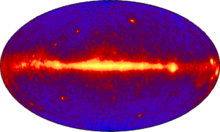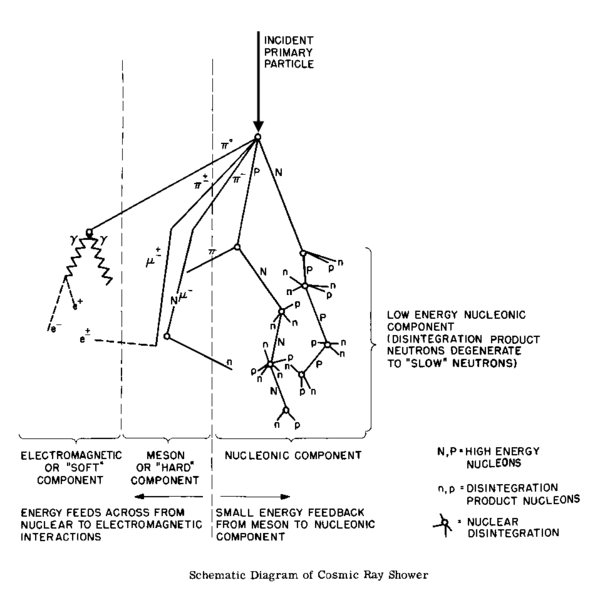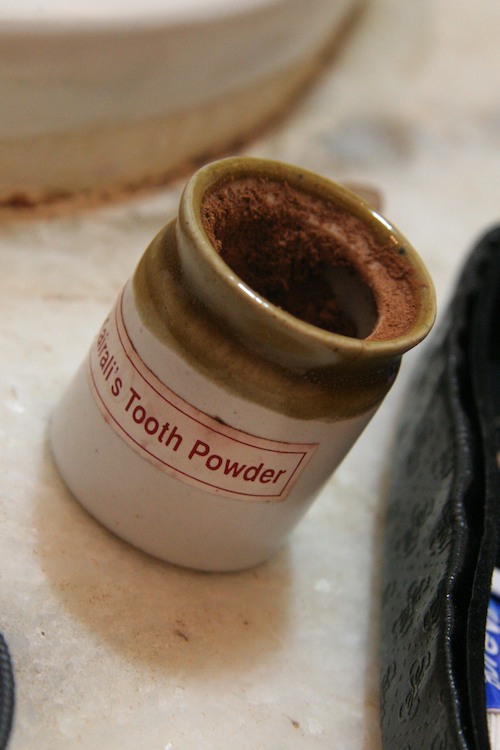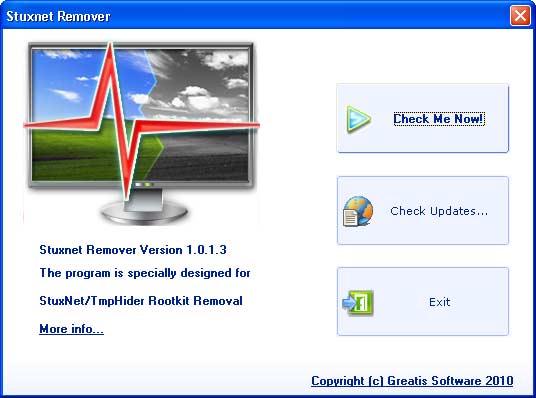2do VLF GRB detector
http://solar-center.stanford.edu/SID/pictures.htmlhttp://solar-center.stanford.edu/SID/Distribution/SuperSID/supersid_v1_1/Doc/SuperSIDManual_v1.pdf 
Swift primarily studies gamma-ray bursts (GRBs) -- the biggest and most mysterious explosions in the cosmos. On April 13, the spacecraft's "burst-o-meter" cataloged its 500th GRB.
"On the one hand, it's just a number, but on the other it is a remarkable milestone," said Neil Gehrels, Swift's lead researcher at Goddard Space Flight Center in Greenbelt, Md. "Each burst has turned over a new piece of the puzzle and a clearer picture is emerging."
"Over five years and 500 bursts, Swift has fulfilled every significant promise of its mission and, in addition, brought a wealth of surprises," noted Derek Fox, a Swift team member at Penn State in University Park, Pa.
Burst 500, officially known as GRB 100413B, exploded in constellation Cassiopeia as a long burst, a type usually associated with the death of a massive star. It wasn't detected in on-board analysis of data from the spacecraft's Burst Alert Telescope (BAT), which was interrupted 18 seconds after the burst as Swift slewed to a pre-planned target.
Instead, GRB 100413B came to light when David Palmer, an astrophysicist at Los Alamos National Laboratory in New Mexico, later analyzed the data. "The BAT team regularly digs through the data once it comes to the ground and finds weak bursts like this one that take a bit of special care," said Goddard's Judith Racusin, who coordinated burst observations that day.
Summaries of other notable bursts in Swift's storied career are listed below.
Swift's main job is to quickly localize each gamma-ray burst, report its position so that others can immediately conduct follow-up observations, and then study the burst using its X-ray and Ultraviolet/Optical telescopes. But it does much more, including ultraviolet studies of exploding stars, monitoring black holes and neutron stars for surges of high-energy radiation, and carrying out a long-term X-ray survey of the entire sky.
The spacecraft rocketed into orbit in November 2004. Managed by NASA's Goddard Space Flight Center, Swift was built and is operated in collaboration with Penn State, the Los Alamos National Laboratory in New Mexico, and General Dynamics of Gilbert, Ariz. Other partners include the University of Leicester and Mullard Space Science Laboratory in the United Kingdom, Brera Observatory and the Italian Space Agency in Italy, with additional collaborators in Germany and Japan.

Origins
Because gamma rays are the highest-energy form of light, the brief but brilliant blasts represent a colossal energy release. Gamma-ray bursts were discovered in 1967 by unclassified military satellites designed to look for clandestine nuclear tests. The first observations required extensive analysis to be sure that the bursts were truly originating beyond the solar system, and they weren't published until 1973.
Over the following years, astronomers learned that sufficiently sensitive instruments could detect about two bursts per day, on average, somewhere in the sky. Of those twice-daily GRBs, Swift's Burst Alert Telescope snares about one in eight for detailed study.
According to Lorella Angelini, a Goddard astrophysicist now developing a comprehensive burst database, the number of recorded GRBs is approaching 6,000. Yet if one considers only bursts with measured distances, Swift's share of the total is a whopping 75 percent.
An earlier NASA satellite, the Compton Gamma Ray Observatory, showed that bursts come in long and short varieties, with long bursts (those lasting longer than two seconds) outnumbering short bursts three to one. Compton also showed that bursts occur randomly and evenly over the sky. Maps of GRB distribution bear no hint of our galaxy's structure. This means that they are extremely far away -- and all the more powerful.
Across the universe
A key breakthrough in understanding GRBs came from the Italian-Dutch satellite Beppo-SAX, which in 1997 provided the first precise burst positions. It later discovered lingering X-ray emission -- dubbed "afterglows" -- at burst locations. Observatories on the ground quickly discovered afterglows in visible light, which provided information that confirmed the burst's enormous distances. Astronomers now regularly study afterglows across the electromagnetic spectrum.
Most of the time, the hard task of measuring burst distances falls to ground-based observatories, which can target a burst's location with telescopes far larger than the Ultraviolet/Optical Telescope aboard Swift.
"Getting on the afterglows quickly with large ground-based telescopes remains a key element in understanding GRBs," said Fox, whose research focuses on follow-up observations. "It's this synergy between Swift and ground observatories that has really moved the ball forward, especially for short bursts."
And the farther the burst, the more important rapid ground follow-up becomes. At distances greater than about 12 billion light-years, gas clouds block ultraviolet wavelengths before they can reach Earth, and all optical light becomes shifted into infrared wavelengths only detectable by specially-equipped ground-based telescopes. Astronomers scramble to detect afterglow from new bursts as soon as they can.
"Thanks to such efforts, we know Swift has seen GRBs as close as about 100 million light-years and as far away as 13 billion light-years," adds Gehrels. Put another way, Swift sees gamma-ray bursts over a span of time equivalent to about 95 percent of the universe's age.
The long and the short of GRBs
By the time Swift launched, mounting evidence already pointed to the deaths of massive stars as the source of most long GRBs -- a scenario that still stands. When such a star runs out of fuel, its core collapses and likely forms a black hole surrounded by a dense hot disk of gas called an accretion disk. Somehow, the black hole diverts part of the infalling matter into a pair of high-energy jets that tear through the collapsing star.
The jets move so fast -- upwards of 99.9 percent the speed of light -- that collisions within them produce gamma rays. As the jet breaches the star's surface, a gamma-ray burst is born. The jet continues on, later striking gas beyond the star to produce afterglows.
Short bursts, however, proved much harder to pin down. "We didn't know their most basic properties," notes Ehud Nakar, an astrophysicist at Tel Aviv University in Israel. "We knew so little we weren't even sure that short GRBs were a unique astrophysical phenomenon."
It turns out they are. "Long GRBs originate from the collapse of stars just millions of years old, but the objects that give rise to some short GRBs reach ages of billions of years before exploding," Nakar adds.
The emerging picture is that short GRBs arise when two compact objects -- either a pair of neutron stars or a neutron star and a black hole -- collide and merge. These objects, which are the crushed cores of exploded stars, pack more mass than the sun into volumes just a few miles across. For those bound in a binary system, Einstein's relativity seals their fate.
According to Einstein, massive orbiting objects give off a type of energy called gravitational radiation. Although no one has yet detected these waves, astronomers have observed an effect predicted by this energy loss -- the slowly shrinking orbits of binary neutron stars. Over billions of years, the stellar cinders grow ever closer and finally merge in an event that unleashes titanic energies and creates a short GRB.
But Nakar thinks the full picture still eludes astronomers. "So far, the data favor merging neutron stars, and that is certainly the most popular idea, but other scenarios remain possible. We still do not know the origin of short GRBs."
Thanks mainly to burst identifications from Swift and the afterglow observations they make possible, scientists now have details on dozens of short bursts and their afterglows. "We're now beginning to understand the home galaxies of short GRBs," Fox said.
Over the past five years, Swift has delivered a great deal of revolutionary science. But its career isn't over yet -- and with a little luck, there will be much more to come.
Swift GRB highlights
April 13, 2010: NASA's Swift discovers its 500th burst. GRB 100413B is a long burst in the constellation Cassiopeia.
April 23, 2009: GRB 090423 in Leo holds the record for the farthest burst yet known -- 13.04 billion light-years away. "The burst is beyond the farthest confirmed galaxies and quasars, making it the most distant object we know in the universe today," Fox said. This find validates models suggesting that galaxy and star formation were well under way in the universe's first billion years and that some early stars died as bursts.
March 19, 2008: GRB 080319B, in Boötes, is truly extraordinary. It produces enough light to be seen briefly with the unaided eye, cresting at visual magnitude 5.3 despite occurring 7.5 billion light-years away -- or more than halfway across the visible universe. Scientists conclude that one of its particle jets appears to have been aimed squarely at Earth.
July 14, 2007: GRB 070714B explodes in Taurus. Afterglow observations indicate a distance of 7.3 billion light-years, making this one of the farthest short bursts to date.
Feb. 18, 2006: GRB 060218 explodes in Aries 450 million light-years away -- in our back yard, cosmically speaking. Although faint, the burst emits detectable gamma rays for more than 40 minutes and detectable optical and X-ray emission lasts more than 10 days. The event is a hybrid, showing characteristics of both a GRB and a supernova, and leads to the best observations yet exploring connections between these phenomena.
Sept. 4, 2005: At a distance of 12.77 billion light-years, GRB 050904, located in Pisces, is the farthest-known GRB at the time, the first of many such Swift records.
May 9, 2005: GRB 050509B, in Coma Berenices, erupts with a flash of gamma-rays that lasts just 0.03 second. Swift turns to the burst fast enough to detect 11 X-ray photons, making this the first short burst with a detected afterglow.
Dec. 17, 2004: Swift's first burst, in Crater, is eight-second-long GRB 041217.
Gamma-Ray Bursts:
Energy Release with Human Experience
------------------------------------
1 ergs = energy to make a mosiquito jump
10^3 ergs = ball drop
10^10 ergs = hit by truck
10^15 ergs = smart bomb
10^20 ergs = H bomb
10^26 ergs = killer asteroid
10^40 ergs = Death Star
Energy Release with Astronomical Experience
-------------------------------------------
10^33 ergs/s = Sun
10^39 ergs/s = nova
10^41 ergs/s = SN
10^45 ergs/s = galaxy
10^52 ergs/s = GRB
The Vela-5A nuclear test detection satellite was part of a program run jointly by the Advanced Research Projects of the U.S. Department of Defense and the U.S. Atomic Energy Commission, managed by the U.S. Air Force, to verfy the Atmospheric Test Ban Treaty.

It and its twin, Vela-5B, were placed 180 degrees apart in nearly circular orbits at a geocentric distance of 118,000 km on 23 May 1969; the orbital period was 112 hours. The x-ray and gamma-ray detector was located 90 degrees from the spin axis, and so covered the celestial sphere twice per satellite orbit. Data were telemetered in 1-sec count accumulations.

In 1973, the Vela satellites discovered brief bursts of gamma-rays of cosmic origin coming from random directions on the sky. Networks of satellites carrying gamma-ray burst detectors were established in the inner solar system in the 1970's and 1980's (every space probe was mounted with a small gamma-ray detector) to produce source locations for these transients using a method analogous to triangulation of ships at sea. However, inspection of the relatively small locations produced no obvious counterparts to the gamma-ray bursts at any other wavelength.

The mystery of gamma-ray bursts has been prolonged by the impracticality of building and launching a gamma-ray telescope with focusing optics that could maneuver and point to the unknown direction of a burst while it is still in progress. This was partially resolved by the launch of the Compton Gamma-Ray Observatory (CGRO) in the late 1980's.

One of CGRO's experiments is EGRET which produced an all-sky map at gamma-ray energies above 100 MeV in galactic coordinates. The diffuse emission, which appears brightest along the galactic plane, is primarily due to cosmic ray interactions with the interstellar medium. The Vela, Geminga, and Crab pulsars are clearly visible as bright knots of emission in the galactic plane in the right portion of the image.

The burst-monitoring experiment on CGRO, BATSE (Burst And Transient Source Experiment), localizes bursts by comparing the burst's different intensities as measured by its eight detectors pointing to the eight octants of the sky.

The resulting coarse localizations have uncertainties of several degrees in radius, making positive identification of the corresponding object at optical or X-ray wavelengths very difficult: literally millions of candidate objects appear within the probable gamma-ray error region, and only one (or none) is related to the gamma-ray burst.

As can be seen from the uniform distribution of burst positions in this recent figure, no preferred direction for the burst sources is apparent. If the burst sources were associated with our own Milky Way Galaxy, then a distribution concentrated toward the Galactic plane (represented by the central horizontal line in the figure -- the "galactic equator"), like that seen by CGRO's EGRET instrument. Such reasoning led some gamma-ray astrophysicists to believe that bursts are coming either from very local sources (just outside the Solar System) or the very distant reaches of the Universe. In the later case, these brief events would be, momentarily, much brighter than entire galaxies.

In the late 1990's, a promising CGRO project takes advantage of real-time telemetry acquisition and calculation of burst source directions. The coarse BATSE, and other orbiting x-ray telescopes, positions are quickly relayed the burst's approximate location to fast-slewing, ground-based cameras primed to search for an elusive optical flash. Larger telescopes too captured the burster's optical counterpart and at right is an image identifying the candidate from the 60 inch Palomar reflector. At left is a prior sky survey image of the region which astonishingly shows a discernible smudge near the same position, likely the burster's host galaxy.

The galaxy and bright burst suggest that this is the closest yet localized gamma-ray burst.

Do the powerful explosions known as gamma-ray bursts (GRBs) originate in galaxies? This subject took on new light with the release of a Hubble Space Telescope image of the sky surrounding GRB 990123. This burst was cataloged as one of the most powerful GRBs ever. The optical transient (OT) counterpart to the GRB can be seen as the bright spot just below center. Once so bright it was briefly visible with just binoculars, this OT has since become four million times dimmer and continues to fade. Now, it can be seen easily with only a large telescope. The diffuse object above is of particular interest because it appears to be the host galaxy of GRB 990123. This distant galaxy seems to have a normal brightness but an irregular shape. This discovery increases the evidence that most OTs do occur in galaxies.

The big, unsolved mystery concerning gamma-ray bursts is their source of energy. The output of a GRB exceeds the total output from over 100 billion supernova's and a billion times the output of an entire galaxy of stars. This would require a black hole the size of a cluster of galaxies (hard to miss) or the collision of a matter and anti-matter about the mass of a star (there are no anti-matter stars). We are left with the possiblity that our knowledge of physics is incomplete to explain this phenomenon.



















 Earth's magnetic field:
Earth's magnetic field:
